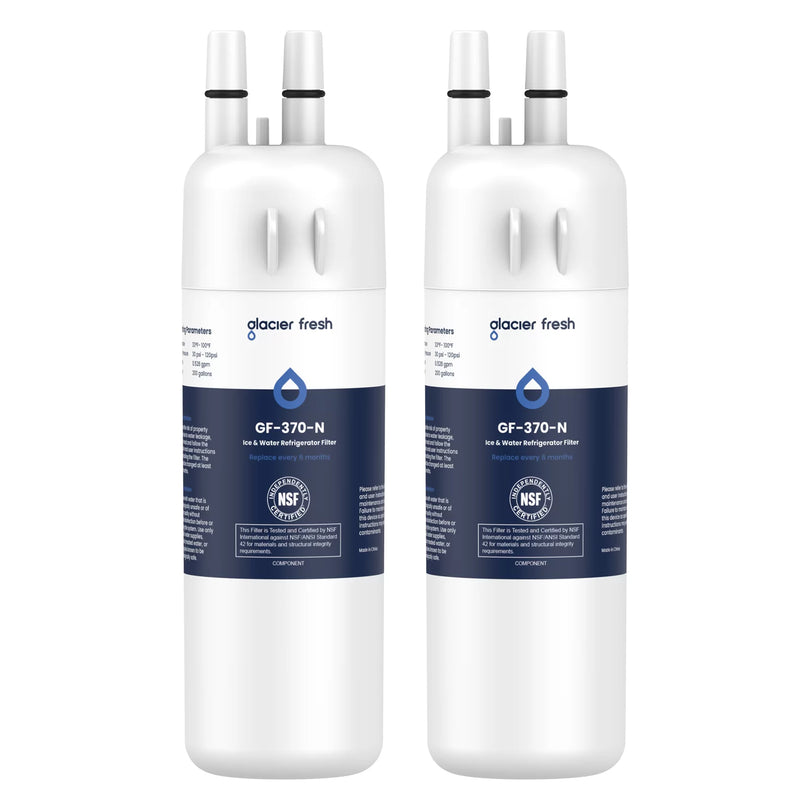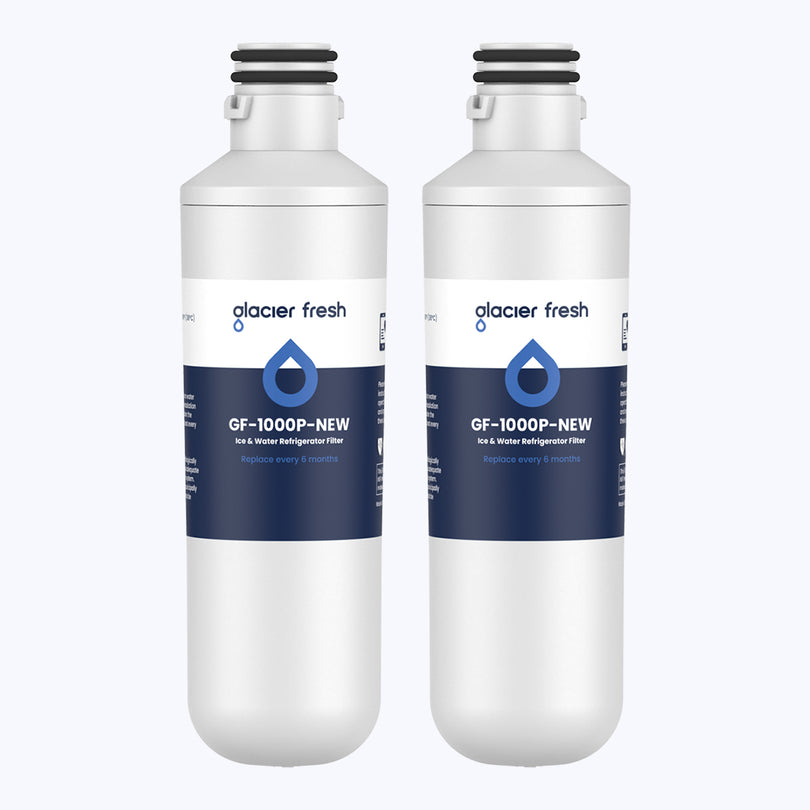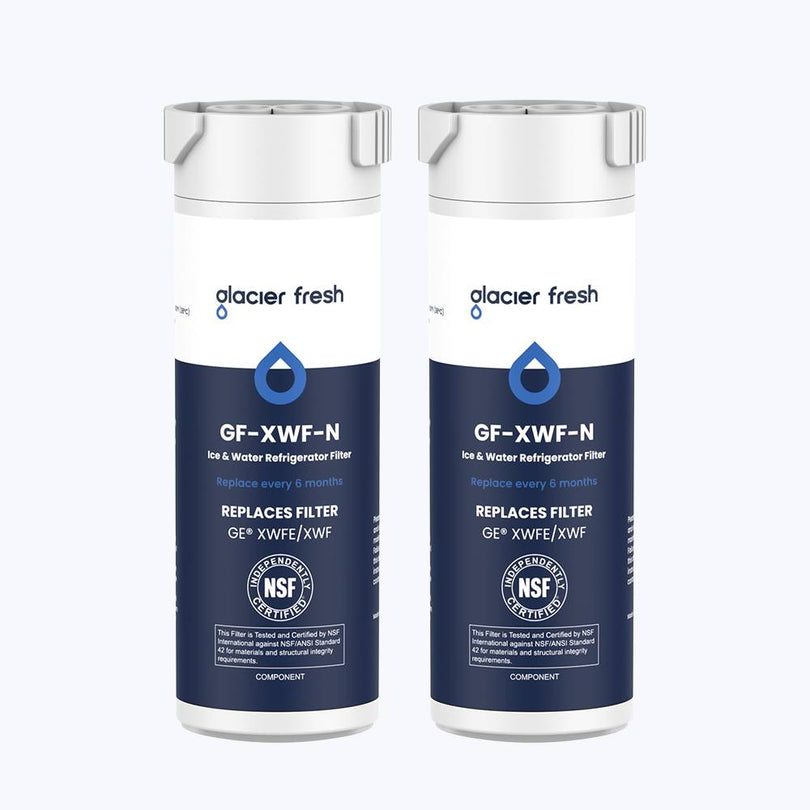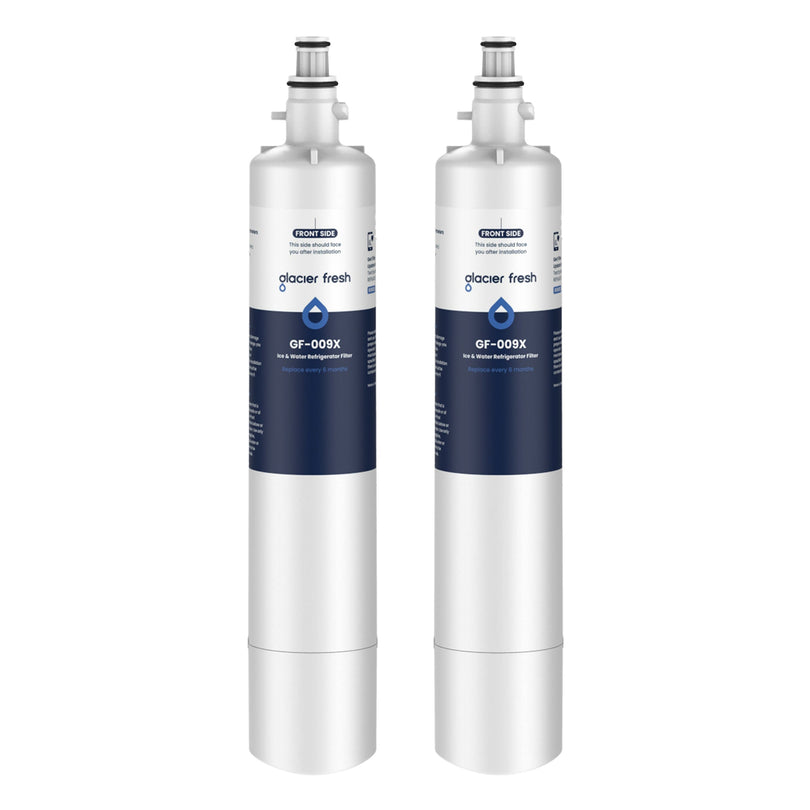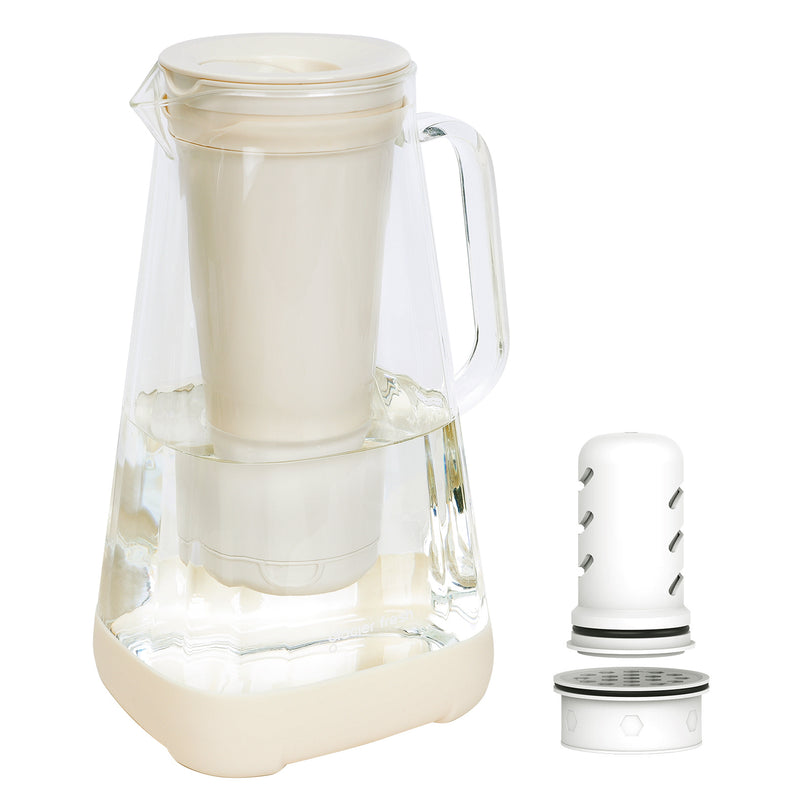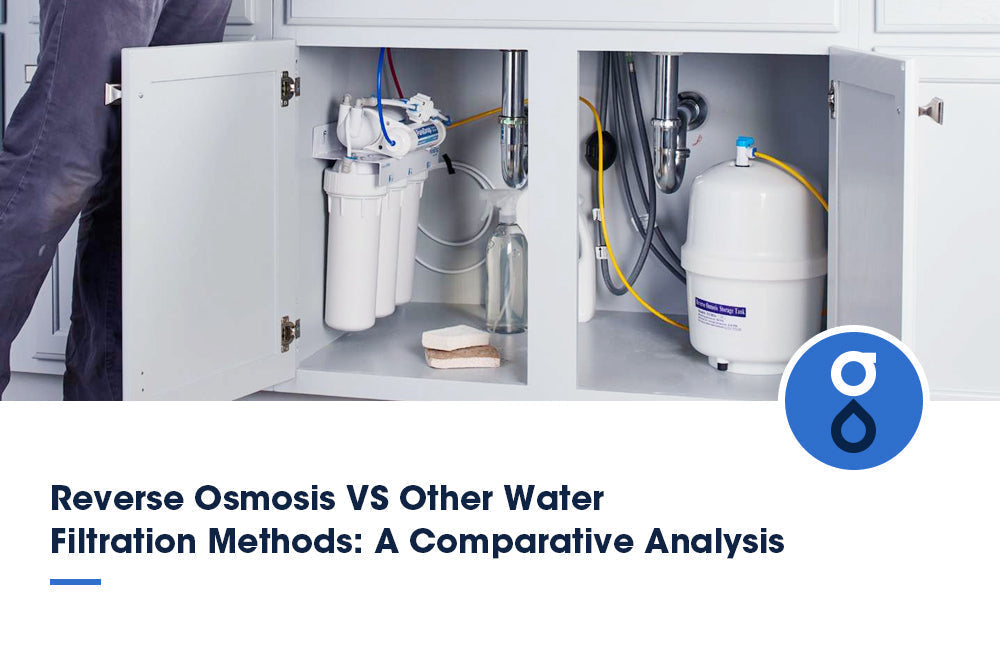Table of Contents:
Das Vorhandensein und die Gesundheitsrisiken von PFAS
Faktoren, die die PFAS-Entfernung beeinflussen
Gängige Vorgehensweisen zur Entfernung von PFAS
FAQs
Abschluss
Sie haben wahrscheinlich schon von PFAS gehört, einer Gruppe künstlicher Chemikalien, die weltweit in großem Umfang in Alltagsprodukten verwendet werden. Aber wussten Sie, dass diese Chemikalien jahrelang in Ihrem Körper und der Umwelt verbleiben können? Das ist besorgniserregend. PFAS werden mit zahlreichen Gesundheitsproblemen in Verbindung gebracht, weshalb ihre Entfernung aus unseren Häusern und unserer Umwelt unerlässlich ist. Doch welche Faktoren beeinflussen ihre Entfernung? Und wie können Sie sie effektiv eliminieren?
In diesem Artikel erfahren Sie mehr über die wichtigsten Faktoren, die die PFAS-Entfernung beeinflussen, und die Techniken, die Sie anwenden können. Wir besprechen außerdem einfache Maßnahmen, mit denen Sie Ihre Belastung minimieren können. Nutzen Sie unser Wissen und machen Sie einen Schritt in Richtung einer gesünderen, PFAS-freien Umwelt.
Das Vorhandensein und die Gesundheitsrisiken von PFAS

Es ist wirklich alarmierend, wie PFAS, diese „ewigen Chemikalien“, in unserer Umwelt lauern und täglich eine heimtückische Bedrohung für unsere Gesundheit darstellen. Zwar gibt es derzeit PFAS-Gesetze, um die Belastung zu begrenzen, doch es ist ein ständiger Kampf gegen einen unsichtbaren Feind. Diese Chemikalien sickern in unsere Wasserversorgung und verwandeln einst zuverlässige Ressourcen in kontaminierte Wasserressourcen. Infolgedessen akkumulieren sich PFAS mit jedem Schluck Wasser, jeder mit kontaminiertem Wasser zubereiteten Mahlzeit und jeder Dusche in unserem Körper. Es ist eine langsame, schleichende Vergiftung, die zu ernsthaften Gesundheitsproblemen führen kann.
Es gibt alternative Produkte, die keine PFAS enthalten, aber Vorsicht und eine sorgfältige Auswahl erfordern. Auch PFAS-Testmethoden werden verbessert und zugänglicher gemacht, um diese Schadstoffe leichter zu erkennen und zu entfernen. Der Schlüssel liegt jedoch in der Aufklärung. Wir müssen die Gefahren, die Quellen und die Lösungen verstehen. Nur dann können wir die durch PFAS verursachten Schäden reduzieren und unsere Gesundheit und die Gesundheit künftiger Generationen schützen.
Faktoren, die die PFAS-Entfernung beeinflussen
Bei der Entfernung von PFAS müssen Sie mehrere wichtige Faktoren berücksichtigen.
PH-Werte und PFAS-Entfernung
Unterschätzen Sie nicht die Rolle des pH-Werts bei der PFAS-Entfernung, da er die Wirksamkeit des Prozesses erheblich beeinflussen kann. PFAS-Quellen finden sich an verschiedenen Orten, unter anderem in Industrieabfällen, Löschschäumen und Haushaltsgegenständen. Wenn diese Verbindungen jedoch mit dem Boden interagieren, kann der pH-Wert das Ausmaß der PFAS-Bioakkumulation in der Umwelt bestimmen.
Bei niedrigem pH-Wert neigen die PFAS-Moleküle dazu, sich stärker an Bodenpartikel zu binden, was ihre wirksame Entfernung erschwert. Andererseits können höhere pH-Werte dazu führen, dass mehr PFAS ins Grundwasser gelangen. Hier liegen die gesundheitlichen Auswirkungen und die strengeren Regulierungsvorschriften. Daher ist das Verständnis und die Kontrolle des pH-Werts im Kampf gegen PFAS von entscheidender Bedeutung.
Verschiedene Behandlungstechnologien

Zur Bekämpfung dieses weit verbreiteten Problems stehen verschiedene Behandlungstechnologien zur Verfügung, die jeweils Vor- und Nachteile haben. Adsorptionsverfahren, die für ihre hohe Entfernungseffizienz bekannt sind, bieten sich an. Dabei werden Substanzen wie Aktivkohle oder Biokohle zur Abscheidung von PFAS eingesetzt, die Behandlungskosten können jedoch erheblich sein. Membrantechnologien hingegen sind praktisch und entsprechen oft den gesetzlichen Vorgaben, die Erstinstallation kann jedoch kostspielig sein.
Darüber hinaus ist es wichtig, die Entsorgung des anfallenden konzentrierten PFAS-Abfalls zu berücksichtigen. Jede Methode wägt Kosten, Effizienz und Einhaltung von Vorschriften ab. Die Berücksichtigung all dieser Faktoren ist bei der Wahl einer PFAS-Entfernungstechnik entscheidend. Denken Sie daran: Die ideale Lösung eliminiert PFAS und bleibt dabei im Rahmen des Budgets und der gesetzlichen Vorgaben.
Der Einfluss der Temperatur auf die PFAS-Eliminierung
Stellen Sie sich vor, Sie rühren in einem dampfend heißen Topf Suppe. Die Hitze spielt eine entscheidende Rolle dabei, alle Aromen zu vereinen – ähnlich ist die Rolle der Temperatur bei der Bekämpfung dieser lästigen Schadstoffe. Temperaturschwankungen beeinflussen den Prozess der PFAS-Eliminierung enorm. Denn die Löslichkeit von PFAS und ihr anschließender Abbau sind hitzebedingte Phänomene.
Thermische Verfahren wie die Verbrennung können PFAS aus kontaminierten Standorten entfernen, indem sie die Hitze zum Abbau der Schadstoffe nutzen. Der Prozess ist jedoch komplizierter. Auch saisonale Einflüsse können die Effizienz der PFAS-Entfernung beeinträchtigen, da kühlere Temperaturen die Wirksamkeit des Prozesses verringern können. Daher ist das Verständnis der Rolle der Temperatur entscheidend für die Entwicklung wirksamer Strategien zur PFAS-Entfernung.
Kontaktzeit und ihr Einfluss auf die PFAS-Entfernung
Bei der Schadstoffminderung ist die Dauer der Interaktion bzw. die „Kontaktzeit“ zwischen den Schadstoffen und dem Reinigungsmittel entscheidend für optimale Ergebnisse. Ihre Bemühungen zur PFAS-Entfernung hängen stark davon ab. Die Kontaktzeit beeinflusst die Adsorptionseffizienz und die Entfernungskinetik und bestimmt, wie gut PFAS-Verbindungen extrahiert werden. Die Filtration spielt hier eine wichtige Rolle; sie muss harmonisch mit einer ausreichenden Kontaktzeit zusammenarbeiten, um die PFAS-Entfernung zu maximieren.
Auch unterschiedliche Sorptionsmitteltypen spielen eine Rolle. Manche benötigen längere Kontaktzeiten, um die Schadstoffe vollständig zu absorbieren. Bedenken Sie, dass auch die Eigenschaften der Schadstoffe eine Rolle spielen. Manche PFAS-Verbindungen benötigen möglicherweise mehr Zeit als andere, um effektiv entfernt zu werden. Daher kann das Verständnis und die Manipulation der Kontaktzeit Ihre PFAS-Entfernungsstrategie erheblich verbessern.
Strategien zur Bekämpfung der PFAS-Kontamination
Um das Kontaminationsproblem anzugehen, müssen Sie eine umfassende Strategie entwickeln, die sich auf die Beseitigung dieser persistenten Schadstoffe und die Verhinderung ihres erneuten Auftretens konzentriert. Dies beinhaltet die Umsetzung strenger Regulierungsrichtlinien, die die Produktion und Verwendung von PFAS einschränken und gleichzeitig nachhaltigere und weniger toxische PFAS-Alternativen fördern. Nachweismethoden spielen eine entscheidende Rolle bei der Identifizierung von Kontaminationsquellen und der Überwachung des Fortschritts.
Darüber hinaus ist das Engagement der Bevölkerung unerlässlich, um das Bewusstsein zu schärfen und verantwortungsvolles Verhalten zu fördern. Gesundheitsmaßnahmen wie regelmäßige Screenings und Behandlungsprogramme können dazu beitragen, die mit der PFAS-Exposition verbundenen Gesundheitsrisiken zu bewältigen. Die Bekämpfung der PFAS-Kontamination ist eine vielschichtige Aufgabe, die gemeinsame Anstrengungen und die Kombination verschiedener Strategien erfordert.
Gängige Vorgehensweisen zur Entfernung von PFAS
Trinkwasser filtern

Sie können Ihr Trinkwasser ganz einfach filtern, um schädliche PFAS-Chemikalien zu entfernen. Das gibt Ihnen ein gutes Gefühl und sorgt für die Sicherheit Ihrer Lieben. Eine gängige Methode ist die Verwendung von Aktivkohlefiltern , die PFAS-Verunreinigungen im Wasser auffangen und entfernen. Diese Filter funktionieren durch Adsorption, wobei die PFAS-Moleküle an der Oberfläche der Kohle haften bleiben.
Eine weitere wirksame Methode ist die Umkehrosmose. Dabei wird eine semipermeable Membran verwendet, um PFAS-Moleküle am Durchdringen zu hindern und so sauberes und sicheres Trinkwasser zu erhalten. Um ihre Wirksamkeit zu erhalten, ist es wichtig, die Filter sowohl in Aktivkohle- als auch in Umkehrosmoseanlagen regelmäßig auszutauschen. Zusätzlich wird ein zertifizierter Wasserfilter empfohlen, der speziell auf PFAS-Verunreinigungen abzielt, um eine optimale Entfernung zu gewährleisten. Durch die Umsetzung dieser Maßnahmen kann die PFAS-Belastung deutlich reduziert und sauberes Trinkwasser bereitgestellt werden.
Fachgerechte Entsorgung PFAS-haltiger Produkte

Für die ordnungsgemäße Entsorgung von PFAS-haltigen Produkten ist die Einhaltung spezifischer Richtlinien und die Einhaltung der erforderlichen Vorsichtsmaßnahmen unerlässlich. Bei unsachgemäßer Entsorgung können PFAS-haltige Produkte wie antihaftbeschichtetes Kochgeschirr, wasserdichte Kleidung und schmutzabweisende Teppiche schädliche Chemikalien in die Umwelt freisetzen. Häufig erkundigt man sich bei den örtlichen Abfallentsorgungsbetrieben nach spezifischen Anweisungen zur Entsorgung dieser Artikel.
In manchen Regionen gibt es spezielle Sammelstellen oder Recyclingprogramme für PFAS-haltige Produkte. Es ist wichtig, diese Produkte nicht in den Hausmüll zu werfen oder in den Abfluss zu schütten, da dies zu einer Verunreinigung der Wasserquellen führen kann. Befolgen Sie stattdessen die empfohlenen Richtlinien, um eine sichere und verantwortungsvolle Entsorgung PFAS-haltiger Produkte zu gewährleisten.
Verwendung alternativer PFAS-freier Produkte
Durch die Verwendung alternativer PFAS-freier Produkte entdecken Sie eine Welt innovativer Lösungen, die die Umwelt schützen und eine gesündere Zukunft für alle sichern. PFAS (Per- und Polyfluoralkylsubstanzen) sind eine Gruppe hochbeständiger und giftiger Chemikalien, die in verschiedenen Produkten verwendet werden, darunter Feuerlöschschäume, antihaftbeschichtetes Kochgeschirr und wasserdichte Textilien. Aufgrund ihrer Persistenz und bioakkumulativen Eigenschaften stellen diese Substanzen ein erhebliches Risiko für die menschliche Gesundheit und die Umwelt dar.
Durch den Einsatz alternativer PFAS-freier Produkte können wir unsere Abhängigkeit von diesen Schadstoffen jedoch reduzieren. Beispielsweise können Feuerwehren anstelle von PFAS-haltigem Feuerlöschschaum auf PFAS-freie Alternativen umsteigen, die bei der Brandbekämpfung ebenso wirksam sind. Ebenso können Industrien PFAS-freie Alternativen zur Imprägnierung von Textilien und zur Herstellung von Antihaftbeschichtungen erforschen. Durch die Einführung dieser Alternativen können wir PFAS deutlich aus unserem Alltag verbannen und ihre Umweltbelastung reduzieren.
Bodensanierungstechniken
Stellen Sie sich vor, Sie gehen durch ein Feld, auf dem leuchtende Wildblumen im Wind wiegen, während Bodensanierungstechniken fleißig daran arbeiten, das mit PFAS kontaminierte Land wiederherzustellen. Die Bodensanierung ist ein entscheidender Schritt zur Entfernung von PFAS aus der Umwelt. Eine häufig verwendete Technik ist die Bodenausgrabung, bei der kontaminierter Boden physisch entfernt und zur Behandlung in eine spezialisierte Anlage transportiert wird.
Eine weitere Technik ist die Bodenwäsche. Dabei werden PFAS mithilfe von Wasser oder Chemikalien aus dem Boden extrahiert. Anschließend wird der Boden behandelt, bevor er wieder dem Boden zugeführt wird. Bioremediation wird eingesetzt, bei der Mikroorganismen PFAS in unschädliche Nebenprodukte zerlegen. Auch Phytoremediation, bei der Pflanzen Schadstoffe aus dem Boden entfernen, ist wirksam bei der Entfernung von PFAS. Richtig eingesetzt können diese Techniken dazu beitragen, kontaminierte Böden zu sanieren und die Umwelt vor den schädlichen Auswirkungen von PFAS zu schützen.
Suche nach professioneller Hilfe

Wenden Sie sich an Fachleute, die Ihnen fachkundige Beratung und Unterstützung bei der Bewältigung der durch PFAS verursachten Herausforderungen bieten und Sie bei der Suche nach praktischen Lösungen zum Schutz Ihrer Gesundheit und der Umwelt unterstützen. Professionelle Unterstützung ist bei der Bekämpfung von PFAS-Verunreinigungen unerlässlich, da diese Chemikalien komplex sein können und für eine ordnungsgemäße Entfernung Fachwissen erforderlich ist. Fachleute wie Umweltberater oder Sanierungsexperten verfügen über das Fachwissen und die Ressourcen, um das Ausmaß der Kontamination zu beurteilen, einen Sanierungsplan zu entwickeln und wirksame Methoden zur Entfernung von PFAS aus Ihrer Umwelt umzusetzen. Sie können gründliche Standortuntersuchungen durchführen, fortschrittliche Technologien einsetzen und die ordnungsgemäße Entsorgung kontaminierter Materialien sicherstellen.
Darüber hinaus können Fachleute eine kontinuierliche Überwachung und Überprüfung durchführen, um die Wirksamkeit des Entfernungsprozesses sicherzustellen und zukünftige Verunreinigungen zu verhindern. Durch die Zusammenarbeit mit Experten können Sie beruhigt sein, da Sie wissen, dass Sie die notwendigen Schritte unternehmen, um die PFAS-Kontamination angemessen zu bekämpfen.
FAQs
Gibt es alternative oder neue Methoden zur PFAS-Entfernung, die derzeit erforscht werden?
Ja, Forscher erforschen derzeit verschiedene alternative Methoden zur Entfernung von PFAS. Dazu gehören Nanotechnologieanwendungen, die PFAS gezielt aus dem Wasser entfernen, und biologische Abbauprozesse, die PFAS-Verbindungen zerlegen.
Auch das Phytosanierungspotenzial bestimmter Pflanzen wird untersucht, ebenso wie thermische Behandlungsmethoden und fortschrittliche Membrantechnologien. Diese innovativen Ansätze könnten künftig effektivere und kostengünstigere Lösungen für die PFAS-Entfernung bieten.
Wie effektiv sind die aktuellen Techniken zur Entfernung aller Arten von PFAS?
Aktuelle Techniken können viele, aber nicht alle PFAS-Typen effektiv entfernen. Der Erfolg variiert je nach PFAS-Quelle und spezifischen Verbindungen. Regulatorische Herausforderungen und die Komplexität der gesundheitlichen Auswirkungen von PFAS erschweren die Situation.
Das Engagement der Interessengruppen und das öffentliche Bewusstsein spielen eine entscheidende Rolle bei der Entwicklung effektiverer Methoden. Obwohl wir Fortschritte erzielt haben, sind weitere Forschung und Weiterentwicklungen erforderlich, um alle Arten von PFAS in unserer Umwelt umfassend zu berücksichtigen.
Wie erfolgt die Entsorgung von PFAS nach der Entfernung?
Die Entsorgung von PFAS nach der Entfernung stellt eine Herausforderung dar. Um die Sicherheit zu gewährleisten, müssen Sie die gesetzlichen Vorschriften einhalten. Dies beinhaltet häufig die Verbrennung von PFAS, wodurch die Chemikalien in weniger schädliche Nebenprodukte umgewandelt werden.
Die Verbrennung kann jedoch fehlerhaft sein, und einige PFAS könnten auf Mülldeponien landen und dort Umweltschäden verursachen. Um mögliche Schäden zu minimieren, ist die Einhaltung sicherer Entsorgungspraktiken wie Eindämmung und Überwachung entscheidend. Informieren Sie sich stets über die aktuellen Vorschriften, um eine ordnungsgemäße Entsorgung zu gewährleisten.
Abschluss
Sie haben die Möglichkeit, PFAS in Ihrer Umwelt zu reduzieren. Es ist wichtig, die Faktoren zu verstehen, die die PFAS-Entfernung beeinflussen, und die eingesetzten Techniken zu kennen. Tragen Sie zu einer gesünderen und sichereren Umwelt bei, indem Sie gängige Praktiken umsetzen. Denken Sie daran: Jeder Einsatz zählt. Bekämpfen wir PFAS gemeinsam für eine bessere und sicherere Zukunft.

